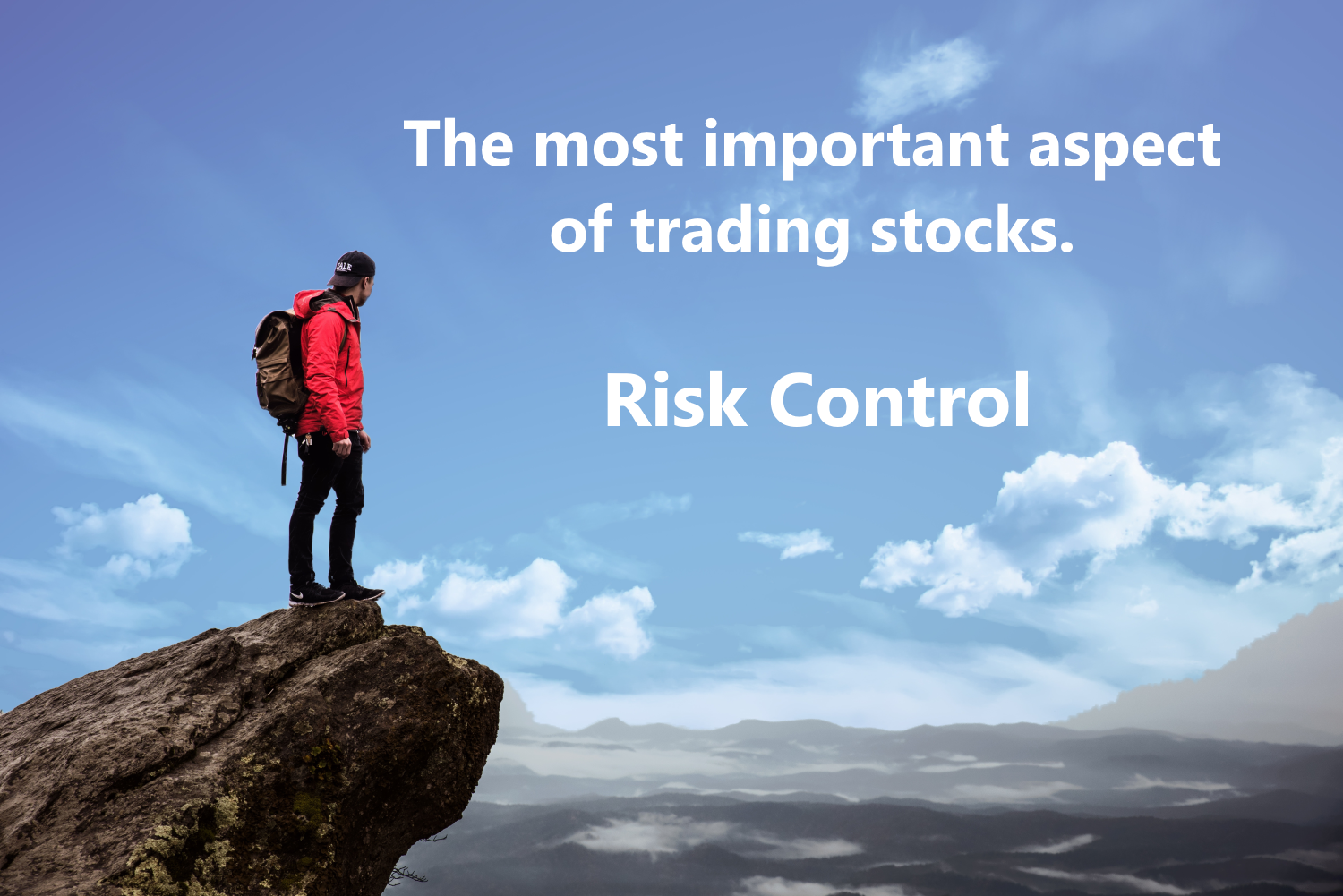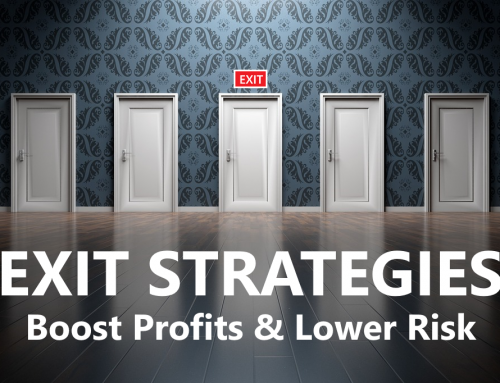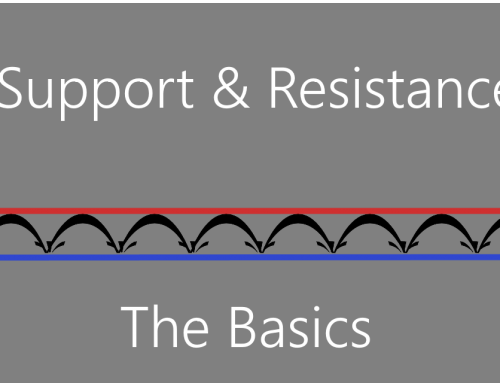Risk Control is the single most important factor in successful stock market trading and investing. Years of research have proven it, and every experienced trader will tell you that managing your level of risk is essential to making money trading stocks online. Although every stock trading plan should include some means of controlling risk, few people know what Risk Control actually is, or how to achieve it.
Stops? What Are Stops?
Several years ago RightLine had the good fortune to participate in a series of workshops on trading the stock market. A group of traders and investors from around the world met in a beautiful, tropical setting for the week-long event. After the initial introductions, we spoke with a very successful young business owner who had just recently started trading stocks online. During the conversation she mentioned that earlier that week she had invested a sizeable amount of money in extremely volatile stocks.
Someone politely asked at what levels she had set her stops. You could see the puzzled look on her face as she replied, “Stops? What are stops?” Needless to say, we spent the next hour or so discussing how to control risk when trading stocks online. Afterwards she immediately placed a phone call to her broker.
While controlling risk when trading stocks is more than just using “stops,” it really isn’t all that complicated. Often called “risk management,” the primary purpose of Risk Control is to protect your capital. Everyone wants to make a lot of money trading stocks online, but it takes time to acquire the skills to be a successful trader. Before you can thrive, you must first know how to survive. This why we developed the RightLine Risk Control System
Minimize Trading Losses
The only way to guarantee survival in the market is to minimize your losses when they occur. Notice the word “when.” Losses do occur, and there is no way to avoid them other than to stay completely out of the stock market. Oddly enough, many traders and investors are convinced that the losing stocks they own don’t count as losses, even though the prices have fallen well below what they paid. They think that as long as they continue to own a stock, it’s not a loss.
Most try to justify this faulty belief with the excuse that they’re “in it for the long term.” Watch out for that trap. It’s great to be in a winning stock for the long term, but it’s never okay to stay in a losing stock for long. It’s wise to take trading losses when they’re small before they have time to cause serious harm.
The RightLine Risk Control System shows you how to recognize and avoid situations that have the potential to severely damage your online trading account. Protecting your trading capital is the only way to insure that you stay in business for the long term. Unfortunately, most people don’t know that they’re at risk until it’s too late.
Planned Trading Losses
There are two types of losses: planned and unplanned. An unplanned loss is the familiar, common type that all new traders experience. It happens when a trade unexpectedly moves against them, and they have made no previous plan to deal with it. The loss continues to grow until it becomes very serious. Unplanned losses are the main reason so many traders fail.
A planned loss is an entirely different type of loss. It is a controlled small loss that you accept in order to avoid larger and much more serious losses. Instead of leaving you with a negative feeling in the bottom of your stomach, taking a planned loss will give you confidence.
Why? Because you know that you have made an intelligent trading decision. Of course it’s not the most enjoyable aspect of trading and investing, but knowing that you made the best choice does give a sense of satisfaction. As tough as it may seem, learning to accept planned losses will produce bigger net profits while increasing your confidence and self-control.
Your Trading Style
It doesn’t matter if you are a day trader, swing trader, short-, medium-, or long-term investor, the rules of Risk Control apply equally to everyone. If you take chances that have the potential to severely damage your trading account, it’s only a matter of time until your unlucky number comes up.
Most traders who lose it all start off by ignoring risk, and then wind up taking greater risks in their attempts to get out of trouble. Using the RightLine Risk Control System can keep you out of trouble in the first place.
Position Size and Trailing Stops
Knowing how to choose the correct position size is the foundation of the RightLine Risk Control method. The single most important decision you make before entering a trade is deciding how many shares to buy or sell. Why is it so important? Because consistently buying too many shares will eventually destroy your account, while not buying enough will yield too small a profit to survive. To arrive at the correct number of shares to buy or sell, you first have to determine how much you can safely risk on each trade.
Trading The Optimum Number of Shares
The amount that you can afford to risk is relative to your Total Account Value Including Cash. Many top professional traders and investors limit the amount at risk to 1 or 2 percent of their entire account. The Maximum Risk Percentage is kept small to prevent a long series of losses from causing serious damage to their capital. Losing trades are going to happen – there is no way to prevent them. The solution is to limit these losses so that you can absorb them and still have enough cash for new trades that will produce big winners.
As a rule of thumb, traders with six figure accounts should risk no more than 2 percent, while smaller accounts should risk no more than 4 percent. Regardless of the exact percentage you choose, never risk more than you feel comfortable losing.
Once you decide how much you can reasonably risk on each trade, select the stock that you want to buy or sell short. We suggest using the RightLine Report “Quick List” as a fast, easy way to locate top quality stocks for both long and short candidates. The Entry points have been carefully selected and include the Initial Stop as well as Trailing Stop levels. Regardless of which stocks you choose, you should always apply due diligence and perform your own research before taking any position.
Trading With The RightLine Risk Control Calculator
After deciding which stock you will trade, enter the information into the Risk Control Calculator. This will include the Entry Price and Initial Stop Level from the “Quick List”, along with your personal Maximum Risk Percentage and total account value (TAVIC). The Calculator will then determine the best position size for your situation. Use this position size when entering the trade, and once your broker fills the order, immediately place an Initial Stop order.
Now all you have to do is follow any profitable price movement with a Trailing Stop. It is important that you only move the Trailing Stop when the trade advances in your favor, never when prices are moving against your trade. When prices move favorably, move the trailing stop a similar amount in the same direction. If prices move against your trade, leave the stop alone. Should prices move back to your Trailing Stop, execute the order at once. This insures that you will exit the trade with either a profit or a reasonable planned loss.
The Seven Percent Alert
Using these risk control measures as part of a well-defined personal trading strategy will greatly increase the odds of your success. However, the possibility exists that extremely difficult market conditions or other circumstances outside of your control could result in a damaging string of losses. To make sure that doesn’t happen, pay close attention to your total net losses. If at any time they reach 7% of your Total Account Value Including Cash, immediately review the section entitled “The Seven Percent Alert.”
The Risk Control System is a simple and effective money management tool that minimizes losses and protects your trading capital. Just remember that your largest profits will come by limiting losing trades and letting the winners run. The RightLine Report’s Trailing Stop levels are selected to contain the risk of each particular stock, while allowing it the freedom to reach it’s maximum potential within the chosen time frame. The following steps summarize the entire system and make it easy to include in your trading plan.
|
1
|
Decide how much you are willing to risk on each trade. Most professionals limit this Maximum Risk Percentage to 1 to 2% of their Total Account Value including Cash. Generally, the larger the account, the smaller the percentage.
|
|
2
|
Determine the logical Initial Stop level for the trade you are about to enter. This is included along with entry points in each issue of The RightLine Report.
|
|
3
|
Select your best position size using The RightLine Risk Control Calculator.
|
|
4
|
Place your order to enter the trade. Once the order is filled, immediately place your Initial Stop order.
|
|
5
|
Follow each trade with a Trailing Stop that only moves in the direction of profit.
|
|
6
|
When your Trailing Stop is reached, execute the order at once.
|
|
7
|
If your total net losses at any time exceed 7% of your Total Account Value including Cash, immediately review the section entitled “The Seven Percent Alert.”
|






